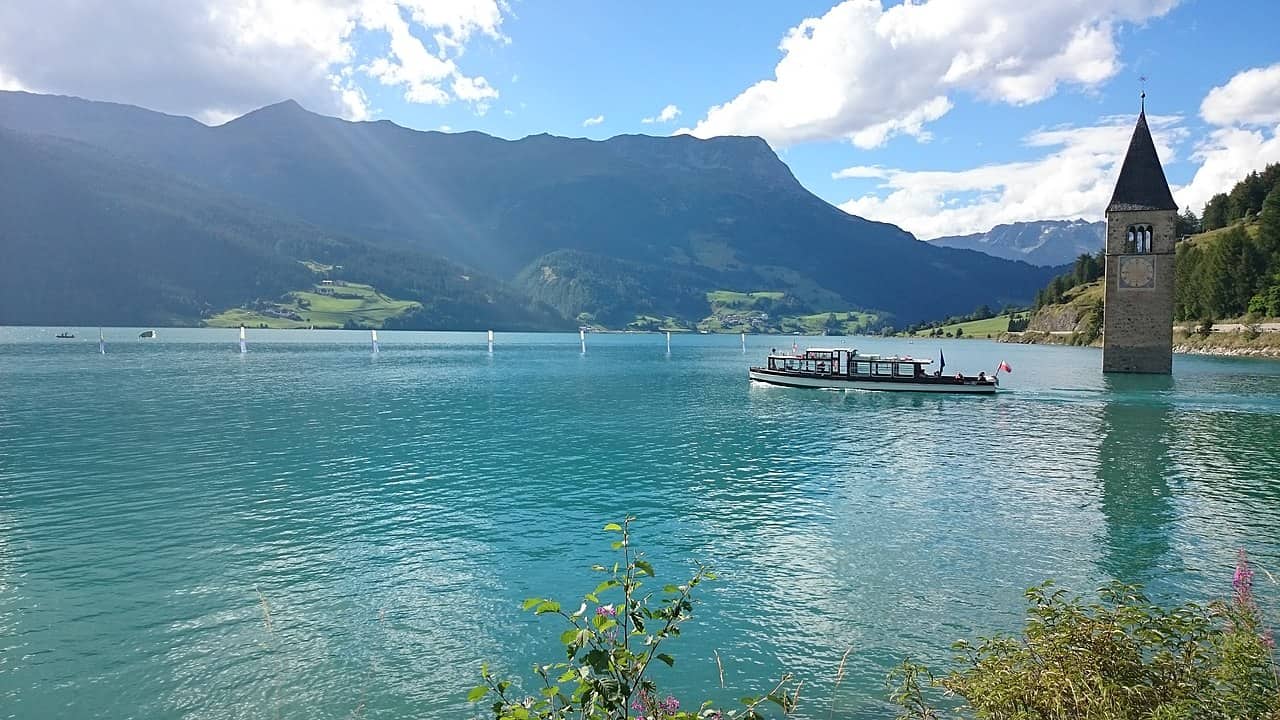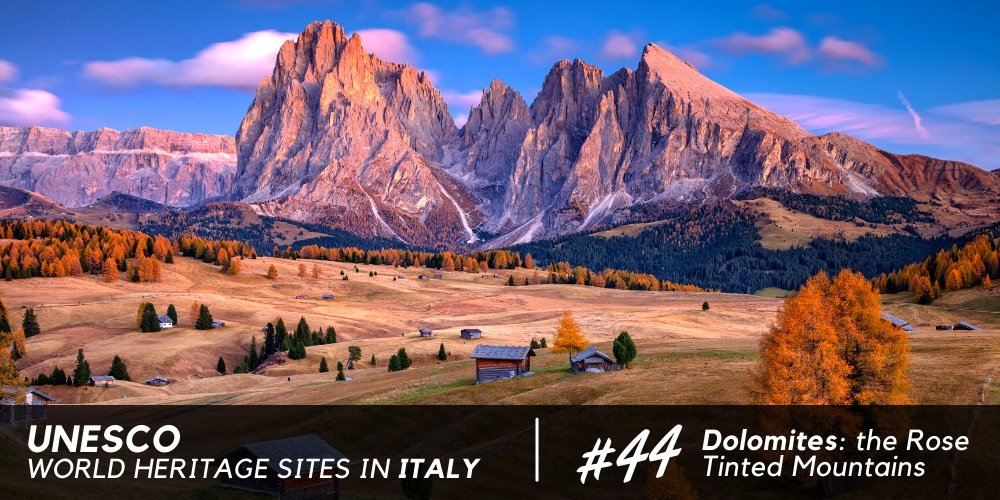This Italian location represents an exceptional place both from a geological-naturalistic point of view and a touristic one, thanks to essential ski resorts and towns that live in symbiosis with the mountains.

The Dolomites, a unique UNESCO World Heritage Site
.jpg)
This place's special and unique nature was already widely recognised in Italy, which had already established more protected and well-defined nature parks with more specific laws by the end of the 20th century. In the early 2000s, efforts were therefore being made to safeguard the area and have this immense mountain range included in the UNESCO World Heritage list. On 26 June 2009, during the summit in Seville, the various principals present at the World Heritage table decided almost unanimously to include virtually all the Dolomite peaks in the World Heritage list.
Unesco awards these places for "the Dolomites' extraordinary landscape and naturalistic value, their charm and beauty".
The variety of landscapes in these mountains is truly extraordinary, with environments and colours unique in the world. They range from the lowest green woodlands to the practically vertical rock faces up to and over 3000 metres. At these altitudes, there are perennial glaciers and large snowfields that characterise the landscape of the Dolomites, with many places to explore and get to know.
The Dolomites, the secrets of the world's most fascinating mountains

The Dolomites are well known worldwide, with a large number of tourists, especially from Europe, frequenting these places and returning as soon as possible. These mountains are totally different from the others, above all because of their composition, which is very rich in a particular limestone rock called 'dolomite'. Named after the 18th-century French geologist Dieudonné Dolomieu, who studied and investigated the various properties of dolomite (a specific type of limestone).
In fact, the properties of dolomite give these mountains their most characteristic colours. From pure white to the pinkish reflections of dawn or even the fiery red of sunset, an iridescent effect is unique in nature.This phenomenon of enrosadira, literally "turning pink", comes from the Ladin word enrosadöra.
Several geological eras ago, these mountain masses were a sea of shells, corals and algae. Geologists date their emergence to around 70 million years ago, which is why they are now also a magnificent geological treasure trove of fossils from the Mesozoic era.
The Dolomites places not to be missed.

If you are planning to visit the Dolomites, you should know that there are many places to see as these mountains cover an area of over 15,000 km². Cortina d'Ampezzo, also known as "the pearl of the Dolomites", is very famous and will amaze you with its many activities and events related to the mountains.
Don't miss the Tofane, Lake Sorapiss, and Mount Pomagagnon. Equally famous are the so-called "Tre Cime di Lavaredo" (Three Peaks), located between the municipalities of Auronzo di Cadore and Dobbiaco, and today considered among the most beautiful alpine places in which to hike and be thrilled by the breathtaking views. Also not to be missed are the Marmolada peaks, among the highest in the Dolomites and very important for the homonymous glacier, one of the largest in continental Europe.
There are also many other places where you can reconnect with nature in search of something much slower pace than the metropolis. Among these are indeed the many lakes in the Dolomites that will make you experience magical moments immersed in unique atmospheres.
Well-known lakes include Braies, Carezza, Fusine and Resia, known for its old bell tower that emerges from its waters. This is the only architectural element belonging to the ancient village of Curon, which can even be reached on foot when the lake waters freeze over in winter.
About the author
Written on 31/12/2021



Emanuele Castellano
The Dolomites are undoubtedly one of the most spectacular naturalistic places you can visit in Italy. They are located in Veneto, Friuli Venezia Giulia and Trentino Alto Adige.